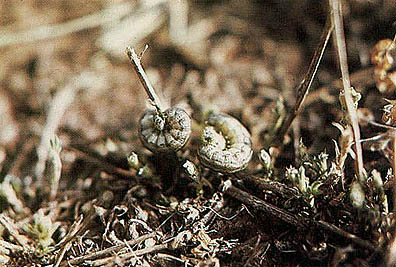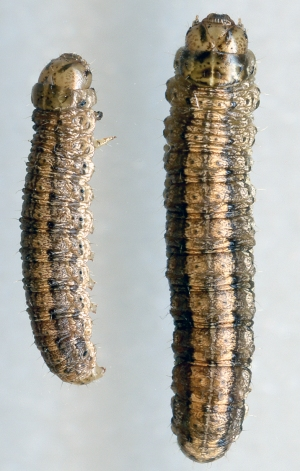Army Cutworm
 Scientific Name
Scientific Name
Euxoa auxiliaris
Hosts
Wheat, alfalfa, etc.
Symptoms
The first indication of army cutworm injury appears as semi-circular areas eaten from the edge of the leaf, or as holes chewed through the leaf. If plants are slow to grow, army cutworms will eat the plant down to the soil line. Damage may appear in "spots" in a field. Army cutworms overwinter in the soil as partially grown larvae. They can tolerate cold temperatures, and often becomes active early in winter anytime that days climb above freezing. This insect is more of a problem when wheat growth is delayed due to cold temperatures or moisture stress.
Description

Control
Please contact your local county extension office for current information.

